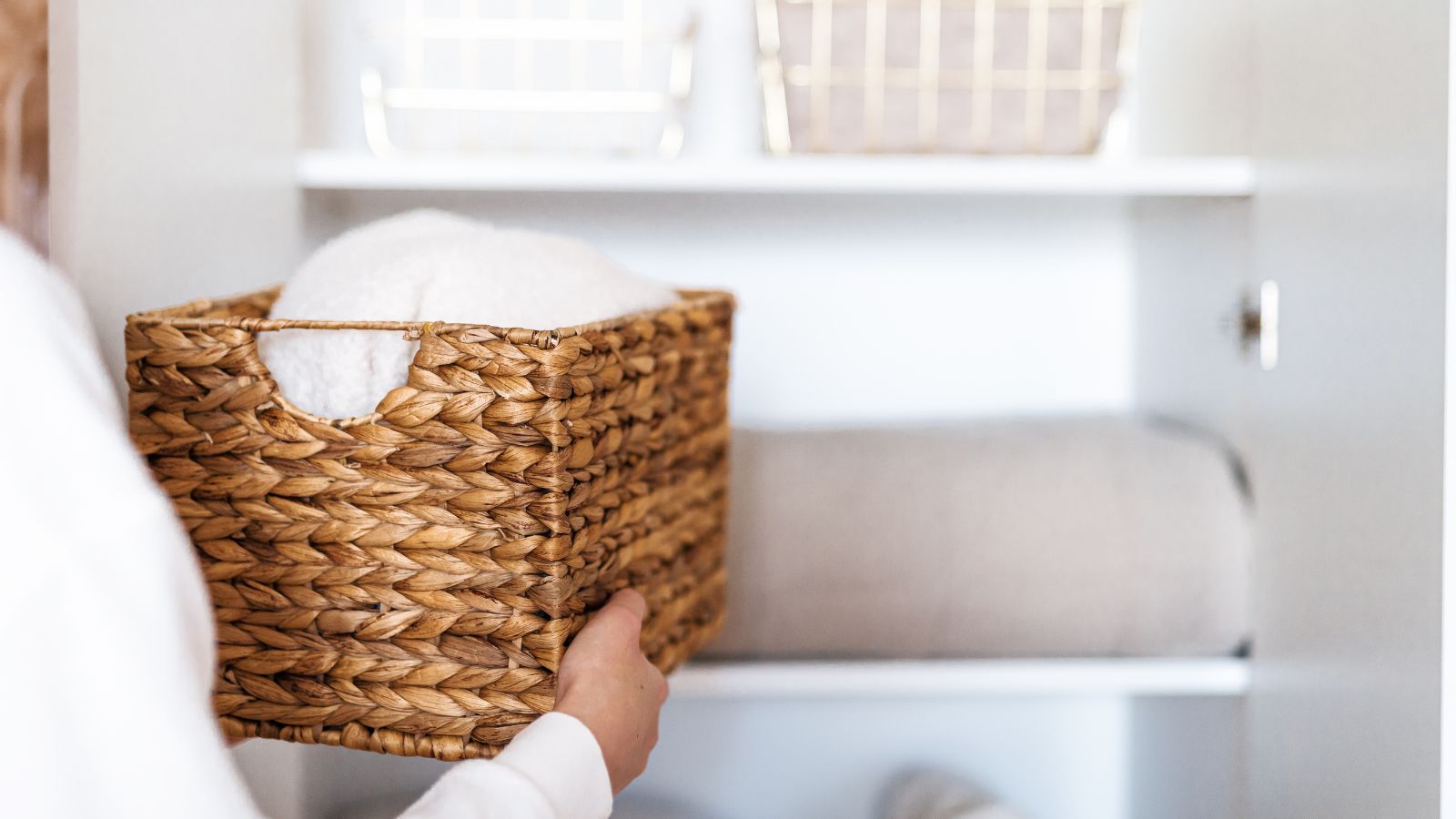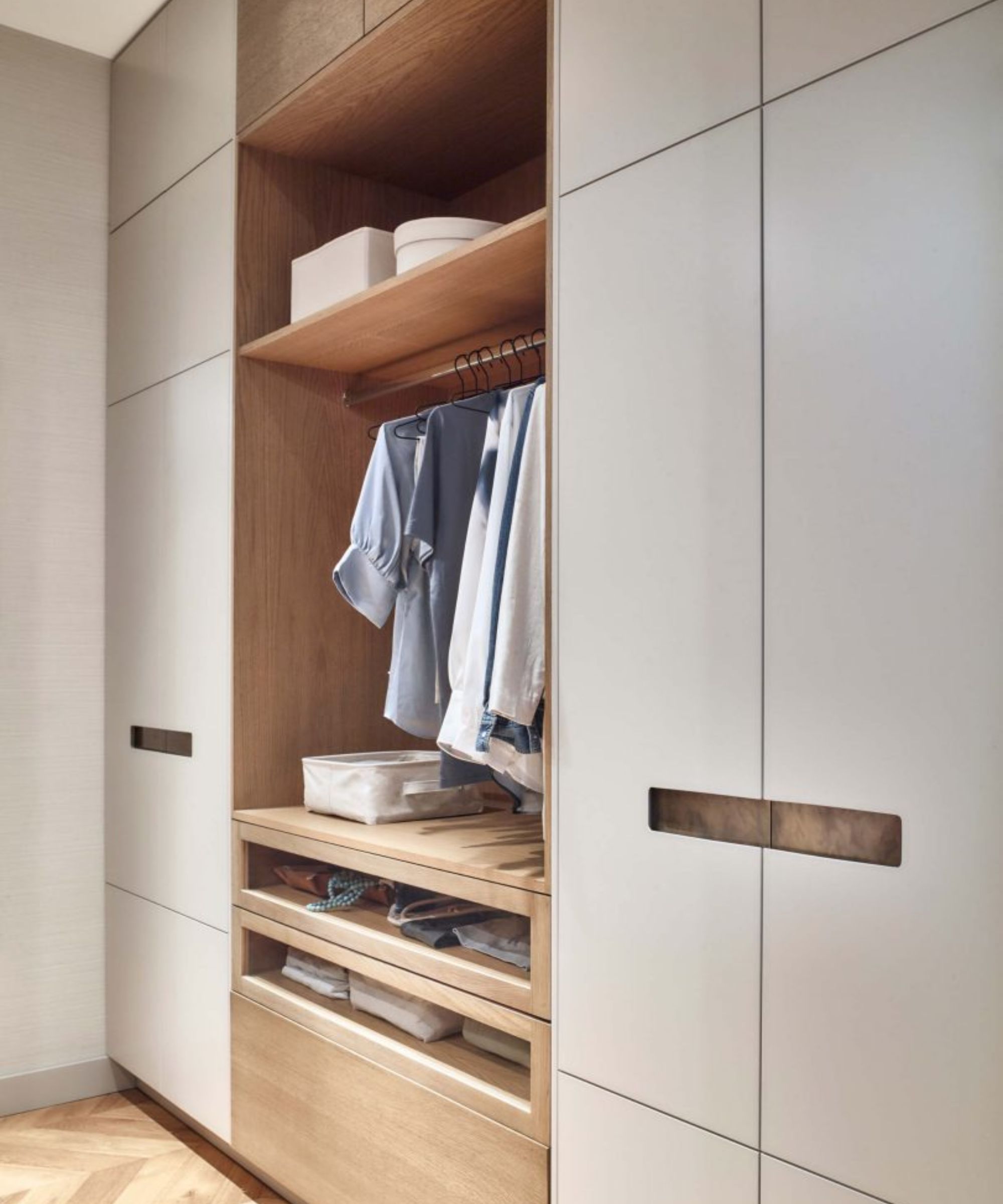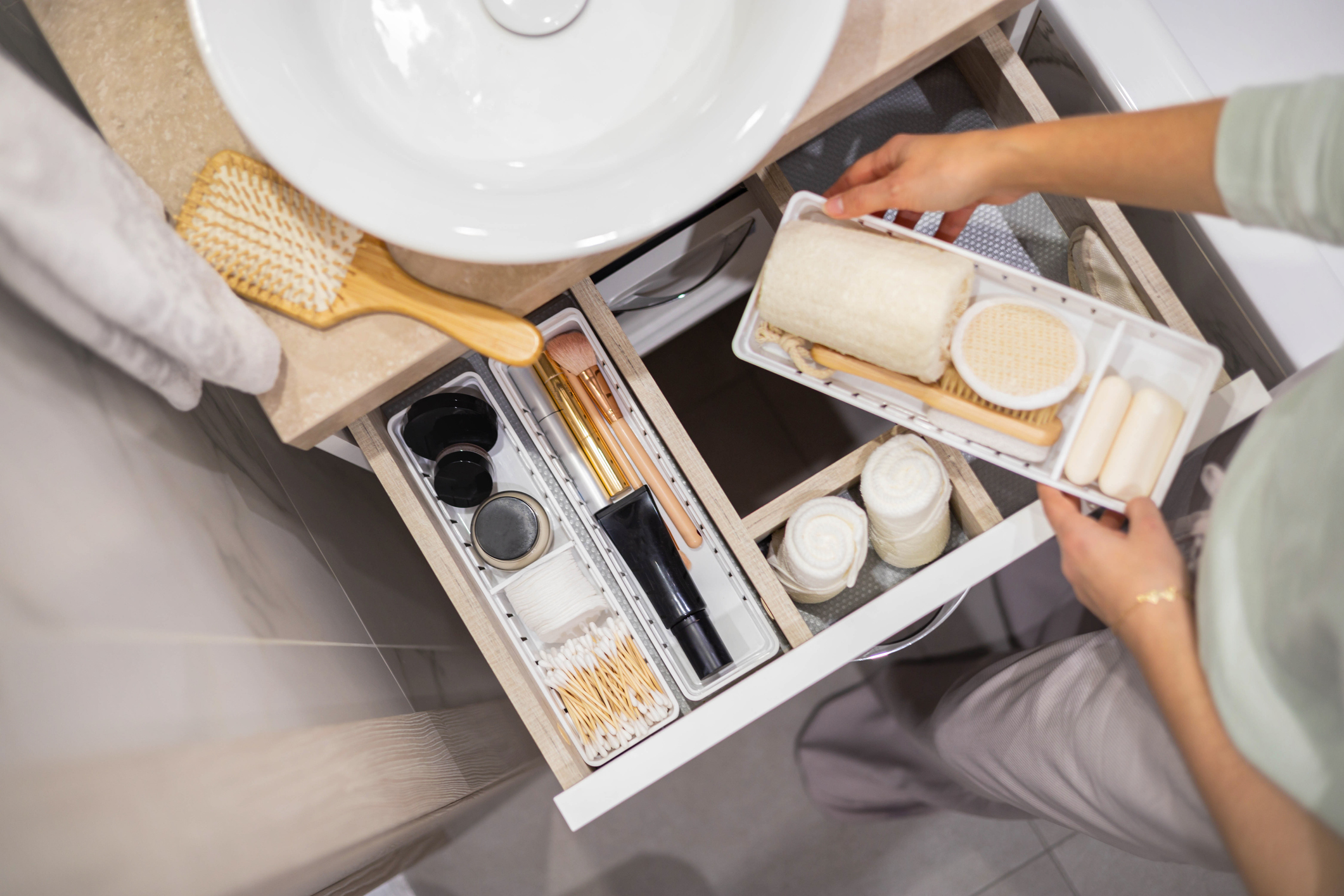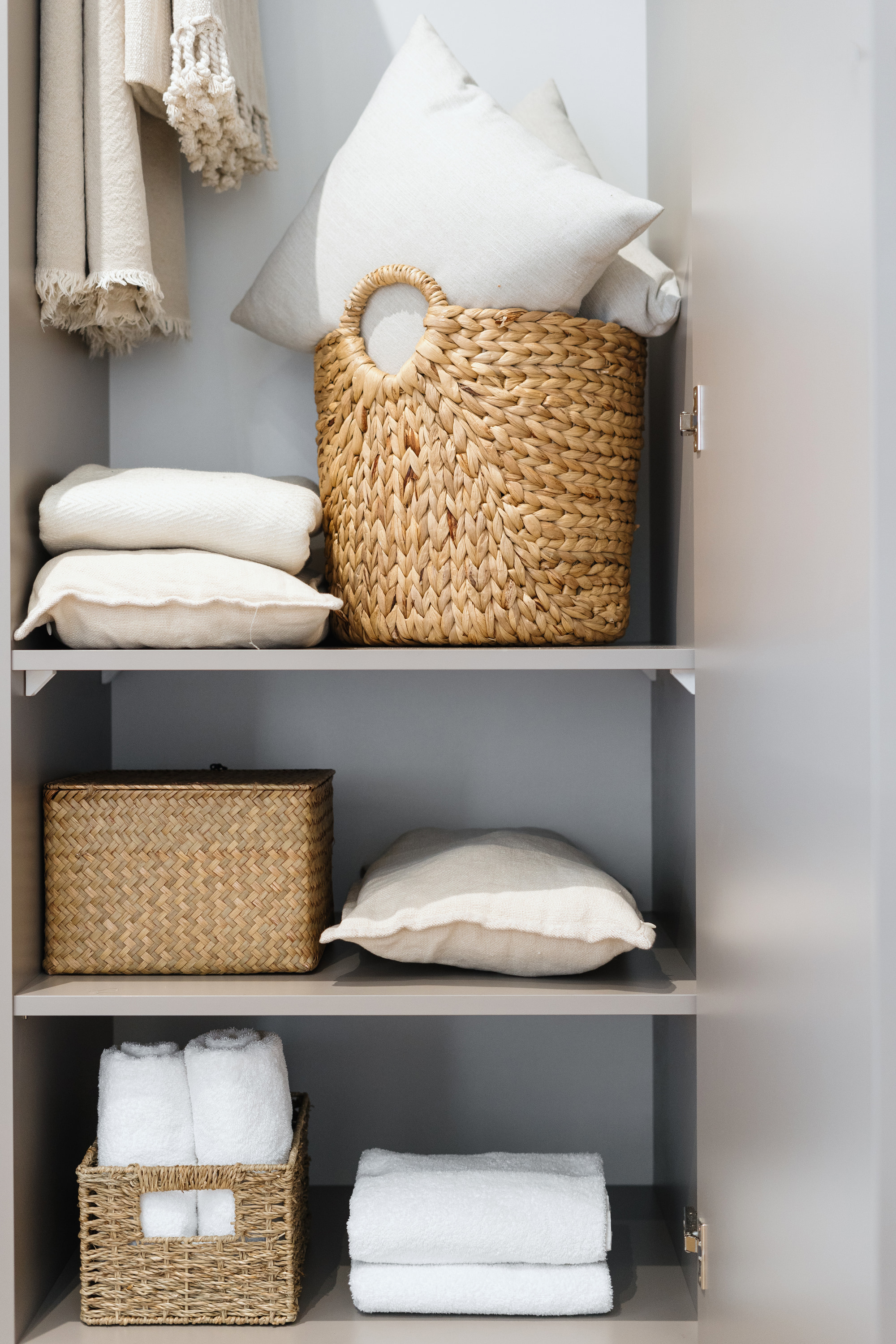Explained: The underconsumption trend and how it can help declutter your home
This might be the best way to mindfully declutter your home, experts claim


If you spend any time on social media, you will likely have seen posts and videos about the ‘underconsumption trend’ that has taken over feeds lately.
While it might seem like a logical way to live our lives – using up everything we buy before buying new, people are hailing the trend as revolutionary in a world driven by consumerism – and professional home organizers are declaring it as one of the most mindful ways to declutter your home.
Here, we break down the underconsumption trend, and expert organizers explain why it might be the best new decluttering tip to change your clutter habits for good.
What is the underconsumption trend?
The underconsumption trend started as a reaction against the current ‘overconsumption’ pandemic driven largely by online influencers. The new movement is encouraging people to rely on the stuff they already own and not buy new, to help stop clutter before it starts.

Silvia de Denaro Vieira, CEO and co-founder of home management app Coexist explains that ‘Underconsumption is a brilliant way to reduce clutter and make the most of what you already have to support your environmental impact. 'Under Consuming’ means being intentional with your spending and what you bring into your home. This often involves planning ahead to avoid those last-minute impulse buys.
‘In our house, we create weekly shopping lists and stick to them to keep ourselves from picking up things we don’t need. We also use packing lists for trips to make sure we have everything we need without overpacking. It’s all about being organized and thoughtful to make life a bit simpler.’

While the most noticeable effect of subscribing to the underconsumption trend is the development of better habits to keep your home clutter-free, it also helps you to manage your home finances better and reduce waste. These two additional benefits further help to reduce stress explains Jane Zhang, lead design associate with Pure Design House who specializes in home organization.
Design expertise in your inbox – from inspiring decorating ideas and beautiful celebrity homes to practical gardening advice and shopping round-ups.
They add, ‘Many people buy many unnecessary items under the influence of social media, which not only wastes resources but can also cause financial stress. By reducing unnecessary purchases, individuals can better manage their finances and achieve a sustainable home and lifestyle, choosing products that better suit their needs.’
It is important to differentiate between underconsumption and extreme minimalism, however. The term might make you picture bare walls and empty cabinets, but that is far from the goal. The ‘trend’ is more aptly associated with moderation, allowing you to purchase or use exactly what you need and nothing more.
How underconsumption can help you declutter your home

If you find that a good portion of your household clutter is a result of duplicates, impulse buys, or ‘over-stocking’, then switching to an underconsumption mindset could be the fix. This is how to actively use underconsumption thinking in your day-to-day life.
1. Make lists of your current stock
Before you can make a dent in your overstock home storage, you need to make note of what is in there. This can look like making a list of every makeup product you own by category, listing out each foundation, then lipstick (also grouping by color) and so on. This will make a checklist of items to use up before you buy more. For example, if you find you already have four red lipsticks, challenge yourself to use up all four before buying another.
Silvia de Denaro Vieira, home management expert, adds that this approach can also be used to help organize a home without spending any money. ‘Make an existing inventory of items you have in your home and brainstorm ways you can breathe new life into them. For example, you may have some storage containers sitting around collecting dust, but can you rearrange them to store your makeup rather than buying the new organizers' influencers flash on TikTok?’
2. Make using items up a game
When you have your list of overstock items (be it makeup, fragrance, skincare, essential cleaning supplies, or your pantry products), make it a game to work through them all before shopping again.
Jane Zhang, lead design associate suggests ‘Aim to use up existing items in your home, to help reduce clutter and free up more space. By reducing the number of items, the home environment becomes cleaner and more organized, making it more comfortable to live in.’
Use the list you have a checklist, and cross items off as you finish them. When an entire category is crossed out, you can reward yourself by going out to buy one replacement.
3. Try a no-buy challenge
If your overconsumption is affecting your personal finances, challenge yourself to a complete no-buy challenge. Going cold turkey might not be for everyone, but it is a worthy consideration if you need to make big changes to your spending habits, suggests Jane Zhang, lead design associate.
‘Underconsumption means reducing unnecessary purchases and focusing on buying items that are truly needed and valuable. Emphasize the reuse and repair of existing items instead of buying new replacements. This practice not only saves resources but also inspires creativity. By reducing the number of items, simplify life and reduce clutter, thereby improving the quality of life.’
A good mindset shift to prevent clutter is moving everything you want to buy to a wishlist, rather than a shopping basket. This way, you can look back on your list after a set period of time (at least two weeks, or even a few months) and decide if you still want them, or if they were impulses. You can also try moving the money you would spend on the item into a savings account. This way, the money is out of the way (so you can’t spend it) and you have a visible reminder of your progress.
This money can then be put towards something more lasting, such as a trip or experience that will be more fulfilling than impulse purchases.
4. Implement the one-in-one-out rule
If going cold turkey on shopping is not for you quite yet, try the one-in, one-out rule instead.
Lisa Dooley, organizing coach and owner of Your Organized Life, says ‘Another great rule for under-consumption, aside from reduce, reuse, recycle and repurpose is the one in, one out rule for controlling how much stuff comes into your space.
‘When you're decluttering your home, focus on how often you use an item and then decide if it deserves space in your home. Consider that books can be borrowed from the library or digitally, specialty cookware can often be eliminated, and we often have too many clothes.’
At the crux of it, underconsumption should not be a trend, but a way of life for all of us. Even if you chose not to fully encourage minimalism at home, underconsumption habits will help reduce clutter in the home and leave more money in your wallet, protect the environment and simultaneously make your life easier and less stressful.
Lisa Dooley, organizing coach, finishes by saying, ‘In organizing, we talk about a place for everything and everything in its place. The less you have, the less you have to find a home for. It really is that simple.’

Chiana has been at Homes & Gardens for two years and is our resident 'queen' of non-toxic living. She spends most of her time producing content for the Solved section of the website, helping readers get the most out of their homes through clever decluttering, cleaning, and tidying tips. She was named one of Fixr's top home improvement journalists in 2024.